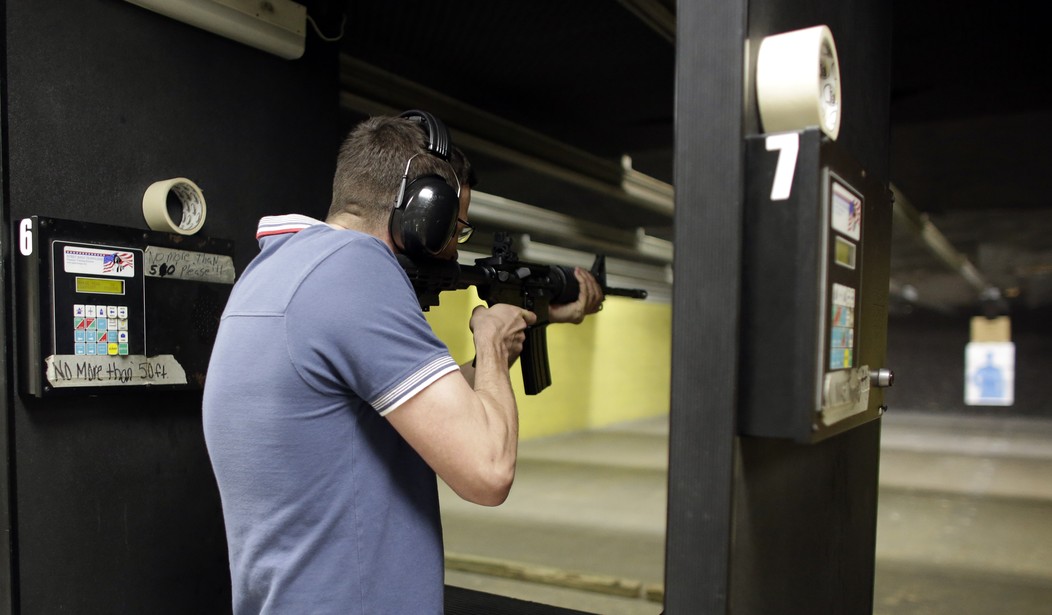This is one of four cases that the Supreme Court sent back to lower courts after issuing its decision in New York State Rifle & Pistol Association v. Bruen, and the only one of the four that deals with a ban on so-called assault weapons. The Fourth Circuit maintains that the state’s ban is perfectly in line with the Constitution because, in the court’s view, AR-15s and other semi-automatic long guns are “like” machine guns, and therefore aren’t protected by the Second Amendment.
That was an absurd conclusion to begin with, frankly, but thankfully groups like the Firearms Policy Coalition and the Second Amendment Foundation are getting another crack at the gun ban, and today the organizations along with several individual plaintiffs filed a supplemental brief with the appellate court arguing that the Bruen case not only completely negates the court’s current view of modern sporting rifles, but that the state’s ban cannot be justified under the text, history, and tradition of the right to keep and bear arms.
Bruen’s second step involves asking whether a challenged law is “consistent with this Nation’s [historical] tradition of firearm regulation.” While in many cases that inquiry will involve new research into potential historical analogues, both Bruen and Heller have already established the relevant contours of the tradition at issue in this case: bearable arms cannot be banned unless doing so would fit into the “historical tradition of prohibiting the carrying of ‘dangerous and unusual weapons.” And a law by definition will not fit into that tradition if it bans “possession and use of weapons that are ‘in common use at the time.”
… In the context of broad bans on bearable arms, in other words, the Supreme Court has already done the historical spadework—and the only restrictions of this kind that it has deemed consistent with the historical understanding of the right to keep and bear arms are restrictions limited to dangerous and unusual arms that are not in common use. This Court’s task, under Supreme Court precedent, is therefore a simple one: it merely must determine whether the banned weapons are “dangerous and unusual.”
Thus, a firearm that is in common use for lawful purposes, by definition, does not fall within this category and cannot be banned.
Maryland’s ban encompasses the most popular rifles sold in the United States today by defining them as “assault weapons”; an invented phrase that that the brief points out is not a “recognized category of firearms”, except by those who want to ban them.
But while “semiautomatic assault weapons” is not a recognized category of firearms, “semiautomatic” is. And it is semiautomatic rifles that Maryland’s “assault weapons” ban targets. The “automatic” part of “semiautomatic” refers to the fact that the user need not manually load another round in the chamber after each round is fired. But unlike an automatic rifle, a semiautomatic rifle will not fire continuously on one pull of its trigger; rather, a semiautomatic rifle requires the user to pull the trigger each time he or she wants to discharge a round.
There is thus a significant practical difference between a truly automatic and a merely semiautomatic rifle. According to the United States Army, for example, the maximum effective rates of fire for various M4- and M16-series firearms is between forty-five and sixty-five rounds per minute in semiautomatic mode, versus 150-200 rounds per minute in automatic mode.
There is a venerable tradition in this country of lawful private ownership of semiautomatic rifles. The Supreme Court has held as much, concluding in Staples that semiautomatics, unlike machine guns, “traditionally have been widely accepted as lawful possessions.”
The federal government doesn’t consider semi-automatic firearms to be “like” machine guns. They’re not covered under the National Firearms Act, for instance, unlike machine guns. Purchasing a semi-automatic handgun or long gun is no different under federal law than buying a bolt action rifle or a revolver, yet the Fourth Circuit declared in Kolbe v. Hogan that semi-automatics should be considered machine guns, at least when it comes to their protection under the Second Amendment.
The Fourth Circuit may well decide to stick to that premise, as ridiculous as it is, rather than acknowledge that semi-automatic rifles are in common use for a variety of lawful purposes from self-defense to hunting to competitive shooting. I’m certainly hoping that the Fourth Circuit adheres to the test that the Supreme Court laid out in Bruen, which should foreclose any possibility of Maryland’s ban being declared constitutional for a second time, but I have a nagging feeling that the appellate court is going to twist the law and logic to find a way to uphold the ban and leave it up to the Supreme Court to ultimately resolve this case.









Join the conversation as a VIP Member